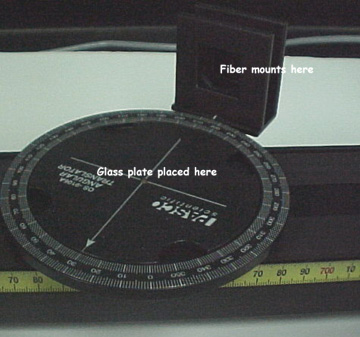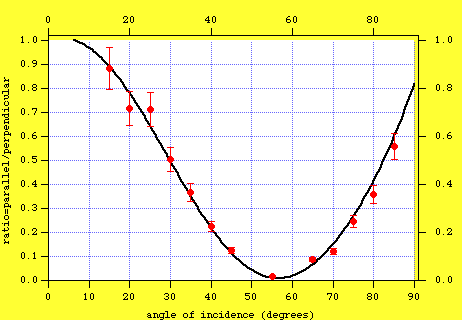Overview:
Please download this PDF note for background information about this experiment
When light is reflected off, say glass, the fraction of light reflected depends on the angle of incidence and the polarization of the incident light. The incident ray, reflected ray and refracted ray all lie in the same plane (plane of incidence) and the light can be polarized parallel to or perpendicular to this plane. The reflection coefficients for the two polarizations are:
![]()
where the angle with the subscript i is the incident angle, measured with respect to the normal to the glass surface, and the other angle is the refracted angle:
For very small angles (near normal incidence):
![]()
For glass (n = 4/3) about 2 % of the light is reflected at normal incidence. Also, for parallel polarization, the reflection coeeficient vanishes at Brewster's angle:
Goal of this Experiment:
The goal of this experiment is to verify Fresnel's equations. In this experiment we will use the angular translator shown below. The fiber optic cable mounts in a place holder which can be rotated into around a platforms which can also be rotated. The glass plate is mounted on the platform. A laser beam is aimed along the axis of the optical bench. The platform is rotated to achieve the desired angle of incidence. The fiber optic placeholder is suitably positioned. A polarizer in the beam can select perpendicular or parallel polarization. The ratio of the reflected intensities for the two cases is recorded as a function of incident angle.

Sample Data:
The plot below shows some sample data recorded by Alex Dzierba and Matthew Bavander compared with the expected theoretical ratio of reflected intensities.
